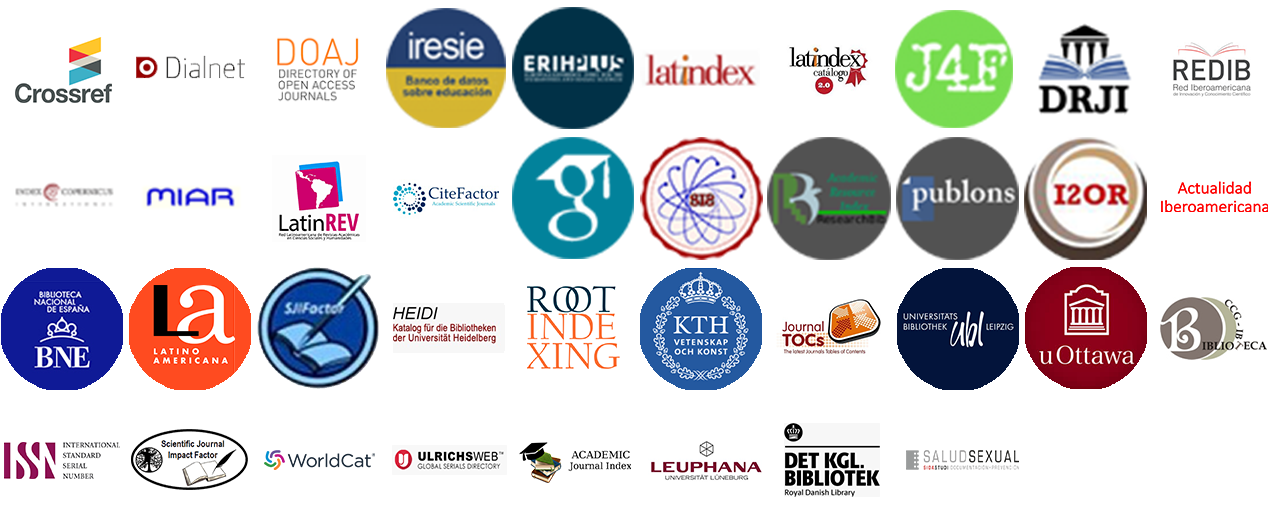Analysis of the impact of the use of electric vehicles on pollution using real maps of Mazatlán, Mexico
DOI:
https://doi.org/10.36825/RITI.10.22.011Keywords:
Air Pollution, Electric Vehicles, Simulation, Smart CityAbstract
In the transport sector, communication technologies (WiFi, WAVE, Bluetooth, 3G, 4G, 5G, etc.) make the concept of a connected car with communication capabilities possible. In the coming decades, connected autonomous driving vehicles, without human intervention, and high security, will travel on roads and cities. In this field, another goal is the reduction of greenhouse gas emissions, which opens the possibility of new areas of transport research that consider the environment, energy, and the use of information exchange to guarantee safe mobility, comfortable and sustainability [1]. Electric mobility ensures sustainable and environmentally friendly urban development [2]. This research will analyze the impact electric vehicles have on the development of a smart city, for which SUMO was used as a vehicular traffic simulator, OMNeT++ for the communications network, and Veins as the link between the two, to achieve results attached to reality. Based on the above, this research hypothesizes that using electric vehicles in real simulated scenarios in the city of Mazatlán, in Sinaloa, Mexico, reduces pollution. To confirm the above, a series of simulations will be carried out that will allow us to analyze and compare the use of electric vehicles in real scenarios.
References
Aguilar Igartua. M., Almenares Mendoza, F., Díaz Redondo, R. P., Martín Vicente, M. I., Forné, J., Campo, C., Fernández-Vilas, A., De la Cruz Llopis, L. J., García-Rubio, C., Marín López, A., Mezher, A. M., Díaz-Sáchez, D., Cerezo-Costas, H., Rebollo-Monedero, D., Arias-Cabarcos, P., Rico-Novella, F. J. (2020). INRISCO: INcident monitoRing in Smart COmmunities, IEEE Access, 8, 72435-72460. https://doi.org/10.1109/ACCESS.2020.2987483
Capello, N. (2021). Opinión: Ciudades inteligentes y vehículos eléctricos, un viaje hacia el futuro – 2º parte. https://portalmovilidad.com/opinion-ciudades-inteligentes-y-vehiculos-electricos-un-viaje-hacia-el-futuro-2o-parte/
BOE. (2004). Documento BOE-A-2004-20410. http://www.boe.es/diario_boe/txt.php?id=BOE-A-2004-20410
BOE. (2004). Documento BOE-A-2004-19715. http://www.boe.es/diario_boe/txt.php?id=BOE-A-2004-19715
División de Desarrollo Sostenible de las Naciones Unidas. (2011). Programa 21. http://www.un.org/spanish/esa/sustdev/agenda21/agenda21sptoc.htm
Sommer, C., German, R., Dressler, F. (2011). Bidirectionally Coupled Network and Road Traffic Simulation for Improved IVC Analysis. IEEE Transactions on Mobile Computing, 10 (1), 3-15. https://doi.org/10.1109/TMC.2010.133
Omnet. (2015). Omnet++ Discrete Event Simulator–Home. https://omnetpp.org
SUMO. (2016). Simulation of Urban Mobility. http://www.sumo. dlr.de/userdoc/SUMO-GUI.html
OpenStreetMap. (2022). OpenStreetMap. https://www.openstreetmap.org
Orozco Sarasti, O., Llano Ramírez, G. (2014). Aplicaciones para Redes Vanet Enfocadas en la Sostenibilidad Ambiental, Una Revisión Sistemática. Ciencia e Ingeniería Neogranadina, 24 (2), 111-132. http://www.scielo.org.co/scielo.php?script=sci_arttext&pid=S0124-81702014000200007
Ferrer Felipe, V. (2019). Estudio de la Reducción de las Emisiones de CO2 Debido a la Sustitución de Vehículos de Combustión por Vehículos Eléctricos en la Distribución de la Última Milla de un Comercio Electrónico de Alimentos [Trabajo de fin de Grado]. Universitat Politècnica de Valènia, España. http://hdl.handle.net/10251/151344
Rojas Lozano, M. D. (2017). Estrategias para la disminución del impacto ambiental de los vehículos eléctricos fabricados con materiales convencionales [Tesis de Grado]. Fundación Universidad América, Bogotá. http://hdl.handle.net/20.500.11839/7040
Santana Chóez, V. L. (2016). Análisis de la implantación del uso de vehículos eléctricos como aporte al cambio de la matriz productiva y su impacto en la no utilización de combustibles fósiles en el Ecuador [Tesis de Grado]. Universidad de Guayaquil, Ecuador. http://repositorio.ug.edu.ec/handle/redug/17744
Torres Sarmiento, J. D. (2015). Estudio de viabilidad en la implementación de vehículos eléctricos en la ciudad de Cuenca [Tesis de Grado]. Universidad Politécnica Salesiana, Cuenca, Ecuador. https://dspace.ups.edu.ec/handle/123456789/8050
Behrisch, M., Bieker, L., Erdmann, J., Krajzewicz, D. (2011). SUMO – Simulation of Urban MObility: An Overview. Third International Conference on Advances in System Simulation, Barcelona. https://elib.dlr.de/71460/
Barbecho Bautista, P., Urquiza-Aguiar, L. F., Aguilar Igartua, M. (2021). STGT: SUMO-Based Traffic Mobility Generation Tool for Evaluation of Vehicular Networks. 18th ACM Symposium on Performance Evaluation of Wireless Ad Hoc, Sensor, & Ubiquitous Networks (PE-WASUN), Alicante, España. https://doi.org/10.1145/3479240.3488523
SUMO. (2022). Car-Following-Models. https://sumo.dlr.de/docs/Car-Following-Models.html
HBEFA. (2022). Handbook emission factors for road transport. https://www.hbefa.net/e/index.html
SUMO. (2022). Trip - SUMO Documentation. https://sumo.dlr.de/docs/Tools/Trip.html
SUMO. (2022). HBEFA3-based. https://sumo.dlr.de/docs/Models/Emissions/HBEFA3-based.html#hbefa3_heavy_duty_emission_classes
Downloads
Published
How to Cite
Issue
Section
License
Copyright (c) 2022 Revista de Investigación en Tecnologías de la Información

This work is licensed under a Creative Commons Attribution-NonCommercial-NoDerivatives 4.0 International License.
Esta revista proporciona un acceso abierto a su contenido, basado en el principio de que ofrecer al público un acceso libre a las investigaciones ayuda a un mayor intercambio global del conocimiento.
El texto publicado en la Revista de Investigación en Tecnologías de la Información (RITI) se distribuye bajo la licencia Creative Commons (CC BY-NC
 ), que permite a terceros utilizar lo publicado citando a los autores del trabajo y a RITI, pero sin hacer uso del material con propósitos comerciales.
), que permite a terceros utilizar lo publicado citando a los autores del trabajo y a RITI, pero sin hacer uso del material con propósitos comerciales.



